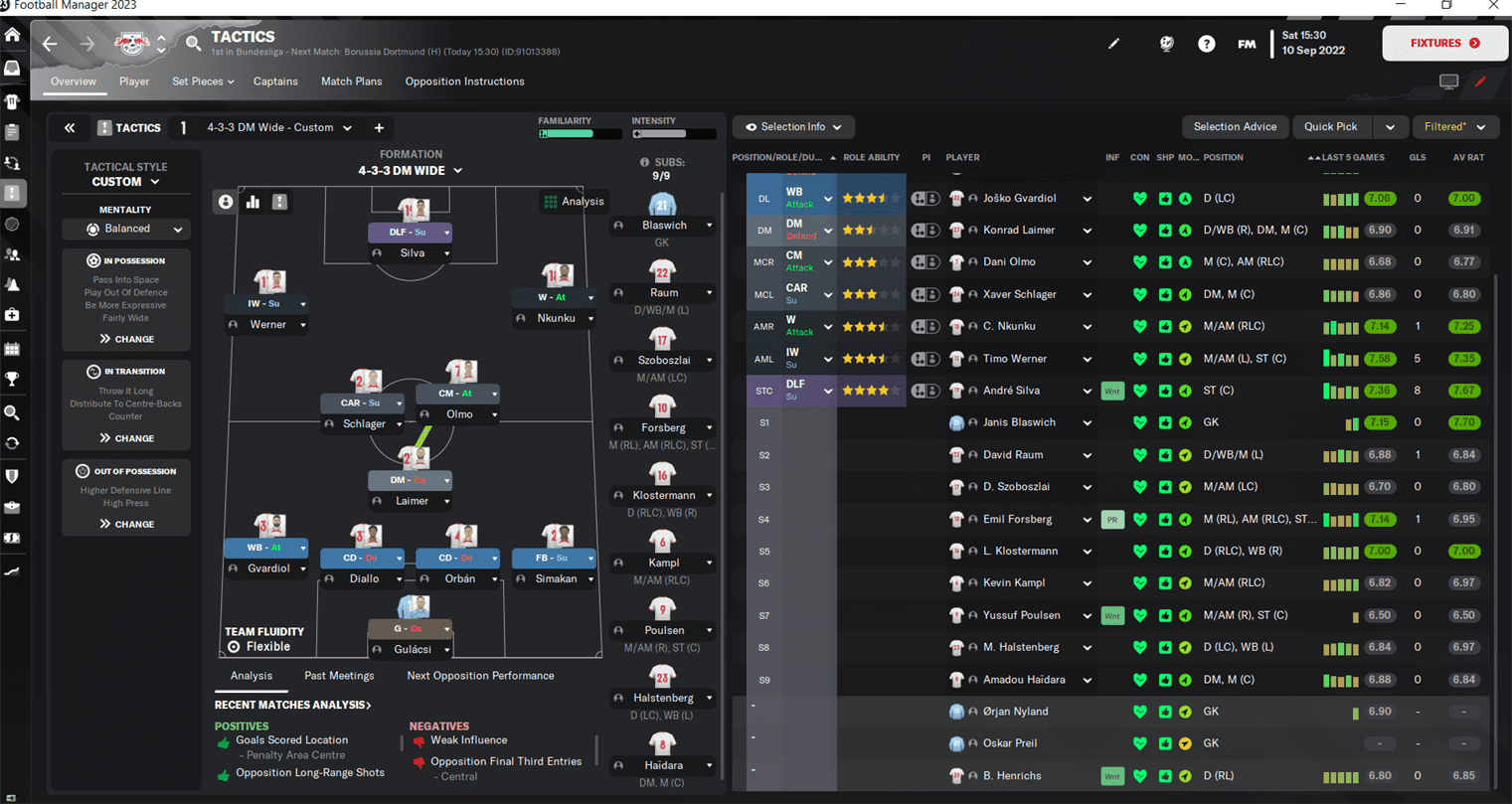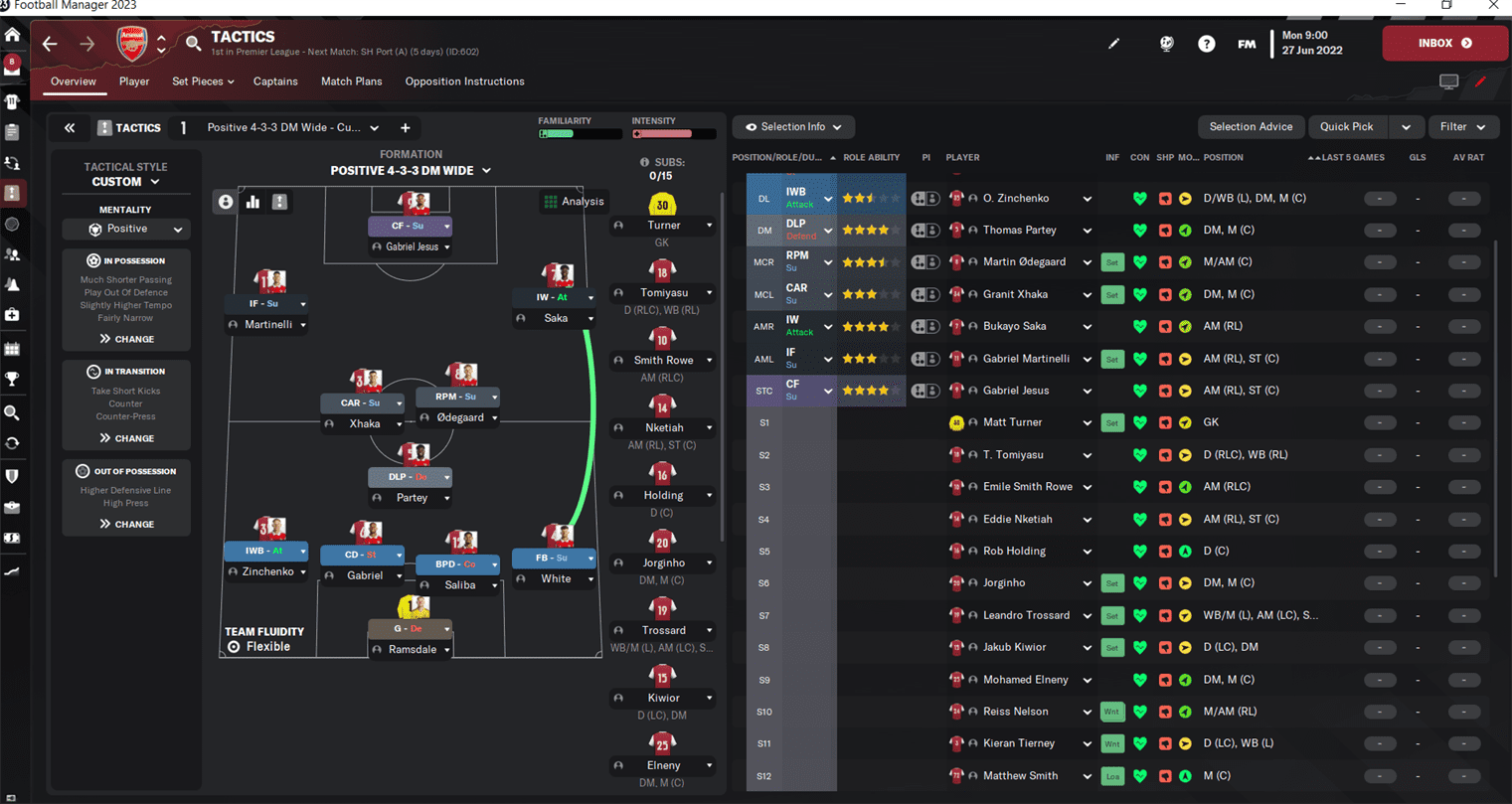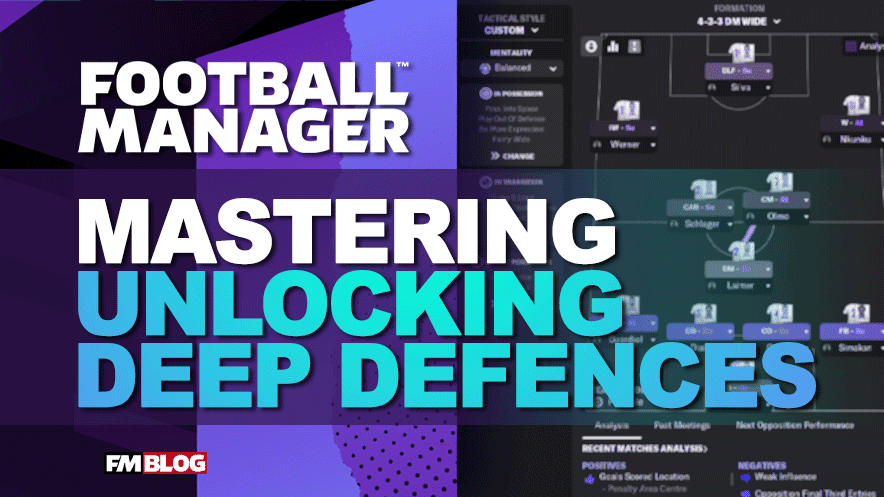Detailed guide on overcoming deep defences in Football Manager. Transform your gameplay and secure your winning streak against stubborn underdog teams
Conquer Park-the-Bus Tactics: Four Expert Strategies to Overwhelm Underdogs in Football Manager
One of the most annoying things when playing Football Manager is coming up against a stacked defence. You arrive, with your free-flowing, beautiful passing team, with your Trequartistas and your Segundo Volantes, probably challenging for the title, only to be outdone by a long ball to a Poacher (most likely from a Goalkeeper kick). No matter that you had like twenty times the xG, ten shots against the posts and a myriad of chances, it’s 1-0 down and goodbye. It’s happened to all of us… but how can we avoid it? Unlocking deep defences is one of football’s oldest challenges, and not one too uncommon in Football Manager, so here are four tips to overwhelm those pesky underdogs.
Open up the pitch
The first thing to realise when coming up against a park-the-bus defence is that, for most of the game, the pitch is actually playing to your favour. There’s no way 10 outfield players can cover most of it in an effective manner; if they try to do it, it’s going to prove exhausting, and since we don’t have rotational substitutions in football like other sports, it’s bound to leave weak links exposed.
As per Arrigo Sacchi’s maxim, you want to make the pitch as big as you can when you attack and as small as you can when you defend. Since low defences can’t shrink the pitch due to their deep positioning, they’re leaving your team all the time and space in the world to make that pitch as big as it can be.
A key part of this will be to make it wide. Using players in roles like the Winger or the Wing-Back will keep them in the flanks, effectively enlarging the area that the defence has to cover. You can also give these players the instruction to “Stay Wider” when your team has the ball to further this effect.
This makes it so defenders have to either chase down your wide players, creating gaps behind them that can be exploited, or leave them be, which provides them with time and space to put tricky crosses or passes into the box. It’s one of football’s oldest catch-22s and one that can’t be solved by any other means than individual skill.
Much in the same way, using players in roles that withdraw from attack, like the Deep-Lying Forward or the False 9, will pose a similar conundrum in the vertical axis of the pitch. Although this is easier to ignore, it can break havoc on the opposition if you have a player with a knack for long shots and they afford him one too many tries. Regardless, opening up the pitch makes defending it much harder.
Quick in transition
For most intents and purposes, there are four phases of play for any team: the Attacking Phase when you have consolidated possession of the ball, the Defensive Phase when the rival has done it, and the transitions, offensive when you’re moving into attack and defensive when you’re moving into defence. For this item, we’re going to focus on the Offensive Transition.
If your opponent is setting up a deep defence, that means, more often than not, you’re going to find yourself in the attacking phase, but seldom that will be the case for 90 minutes. Eventually, even if only by virtue of the second-half kick-off, your opposition will have the ball, and they will move forward. That’s when you need to get the ball back and be quick in attacking transition to create an easy chance.
The best way to do this is to have players who will look to launch forward at speed. Roles like the Winger, the Mezzala, the Box-to-Box Midfielder or the Wing-Back will look to move the ball quickly. In the same way, having enough players in Attack duty will up your players' individual mentality, meaning they’re ready to take the risk, while your Team Mentality will have a similar effect. Likewise, the “Counter” team instruction under the In Transition option will make your players up their mentality and risk-taking when they sense the possibility of a counterattack.
In a game where you’re only going to be afforded a few chances in space, making the most of the ones you do get can be crucial, so even if this is not your usual style, consider making these changes to hit them in speed.
Move the ball
The single easiest thing to defend in football is a stagnant attack. Slow ball movement makes it so your offensive is easy to predict and contain. While you can use this versus stronger opposition, where losing the ball can be a costly mistake, and you’re expecting them to leave gaps as they themselves chase after a goal against a deep defence, you’re basically playing to their hand.
Here’s where quick, snappy passing can help you win. When you move the ball about in your attacking phase, the defence will have to keep a constant check on these movements, shifting side to side with the ball, following their designated covers and tightening space.
However, the ball will always move faster than the men behind it. That means if you can play the ball faster, not dwelling on it but rather shifting it quicker, both horizontally and vertically and doing so in creative ways, the defence will struggle to catch up, and eventually, holes will appear.
The way to do this is to play at a higher tempo. This will require very skilled, technical and smart players who can receive and move the ball at pace and without making mistakes, as well as spotting quickly the pass that will hurt the defending block the most, but when done correctly, it can be devastating.
In the same way, Team Instructions like “Work Ball into Box” or “Much Shorter Passing” will stifle your attack, as they instruct players to be more risk averse in moving the ball at the final third, where you want to have quick passes. That doesn’t mean you have to go gung-ho but avoid overly cautious approaches. On the other hand, instructions like “Be More Expressive” and “Dribble Less” will keep the ball moving in unpredictable ways.
In the same way, Team Instructions like “Work Ball into Box” or “Much Shorter Passing” will stifle your attack, as they instruct players to be more risk averse in moving the ball at the final third, where you want to have quick passes. That doesn’t mean you have to go gung-ho but avoid overly cautious approaches. On the other hand, instructions like “Be More Expressive” and “Dribble Less” will keep the ball moving in unpredictable ways.
Make the most of set plays
I get it. Set plays aren’t as glamorous as a beautifully constructed, dynamic play. But if it’s a deadlock and you need to win, any goal will do. If you’re playing a deep defence, you’re likely having most of the ball, and, therefore, most of the fouls against and dead balls. This presents a unique opportunity to experiment with a larger sample size of chances.
Keep a close look at what happens when you get a free kick or a corner; are there any players struggling to cover your attackers, are there any players they’re leaving open, is the goalie too shy about coming out? Spotting any weaknesses and making adjustments on the fly can provide that edge.
Also, be mindful of your deliveries. If you’re not hurting them, either because they’re too solid aerially or your designated players aren’t good enough, perhaps plot a short play and take advantage of having every defender in the same place. Small gains can go a long way.
Hold steady and don’t overcommit
Regardless of everything we’ve talked about, the number one mistake to avoid when facing a deep defence is overcommitting. Remember that scenario we discussed in the intro? The one where you concede the one silly goal? That comes from over-committing.
A team that sets out to block your every move and ruin your day won’t score on you unless you give them the chance. Sure, you may have games where you simply can catch a break, but that’s only a 0-0. If you start sending too many players forward, playing with three strikers and five attacking midfielders, you’re only exposing yourself at the back, so the one time the opposition get the ball, they get a clear chance.
Moreover, most of the time, it doesn’t work. Throwing more people forward doesn’t solve the problem of lack of space (which is what you’re trying to solve, finding space to score) any more than loading more fuel makes a car go faster. If anything, it makes your players easier to mark off from the game as they’re all lumped in front of the defenders.
When facing a deep defence that won’t budge, consider whether your approach is working or not (that is, are you creating good chances and just having bad luck scoring, in which case just hold your course), and if not, how can you adapt that approach; maybe they’re susceptible to aerial game, maybe they struggle tracking runner from behind, maybe they can’t defend against a different formation. Throwing bodies forward is often not a solution, but a further complication.
Conclusion
Facing a deep defence can be one of the most annoying problems in Football Manager. They present a challenge that requires a comprehensive approach and understanding of the game, but also patience, a keen eye and a bit of luck. By employing these principles, hopefully, you can finally break down those impenetrable defensive systems to secure valuable points and achieve long-term success. So, embrace the challenge and experiment with different approaches because that’s how to get unlocking defences done right.

















